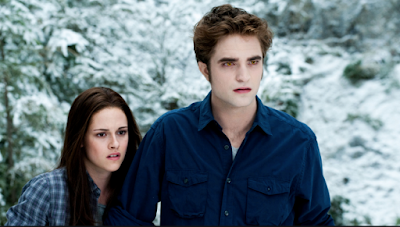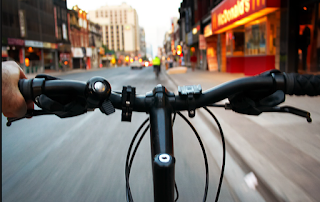The Editing Process -
- Post production was something we felt would we would need to spend a lot of time on due to the amount of footage we needed to edit. Overall it took us roughly 4 weeks of lesson time to finally export our final cut, we managed to meet the deadline which meant we submitted our work on time so now we have time to focus our time of evaluation.
- Throughout this period we worked well as a pair sharing the editing evenly and learning a variety of new skills by experimenting with Adobe Premier and watching videos on how to achieve certain affects and developing our technique. We took it in turns and we would rotate who had control of the computer each lesson, this meant we spent an equal amount of time editing and even when we weren't the person using the editing software we contributed ideas so it was constantly a pair exercise.
- During this process as a pair we learnt our strengths and mine was editing, I seemed to pick it up quickly so when Abbie didn't fully understand something I was able to help her and teach her something.
Lesson 1 -
- Before the first lesson I had already transferred the media files onto a memory stick so I had two copies of the original footage incase anything got lost I knew we had a back up. During the first lesson we uploaded all the media files from our day of filming onto the computer we were going to be editing on and added them all to a folder called 'Dear Diary Footage'. The computer we used was rather slow so this process took longer that anticipated so while we waited we planned out the order of clips so when we went to put it together it didn't take as long. Towards the end of the lesson we uploaded all the files from the folder onto Adobe Premier and saved it as 'Dear Diary'.
Lesson 2 -
- We arrived to our second editing session and opened the file we saved as Dear Diary the previous time around, we then began to name the clips i.e. 'clip 1, clip 2' and cut them down to the size we needed and placed them together in order. This took the whole lesson of us trimming down clips and rendering them to ensure the quality stayed as good as possible for when we watched it back.
Lesson 3 -
- During our third lesson when spent the entire hour looking for an appropriate piece of music to use as background sound for the movie opening. We used websites such as YouTube, Orange Sounds and MP3 Converters to find and download sounds we felt tied in with our chosen genre. We wanted something that had an eerie tone and made the audience feel on edge. Unfortunately, due to the temperamental internet speed at the time is why it took us longer than expected to find a piece of audio.
Lesson 4 -
- In the fourth lesson we went through each individual clip which had previously been put into chronological order and removed sound which we didn't need. Also, we increased/decreased the sound on certain clips depending on the quality of sound and how clear it was. Furthermore, we added the music we chose and downloaded the recent lesson. As well as this we looked for a twig snapping sound affect because the one we recorded on the camera wasn't picked up clear enough. And once we got to the clip where that sound was needed due to there being no dialogue we eventually decided to remove the sound from that section anyway. We finished the lesson by re-saving the document which we had been working on.
Lesson 5 -
- Throughout the fifth editing lesson we spent on our movie opening we tried out different intensities of colour, and tried different filters to decrease the light intensity to make it look more like a thriller movie. Despite this we felt that due to many of the shots being filmed outside on a really sunny day it didn't look right when we decreased the light. This then lead us to the conclusion that we should have filmed at a darker time of day to achieve a more sinister affect. This process took the whole lesson due to the MacBook we used was rather slow and froze at certain points during the process.
Lesson 6 -
- During this lesson my partner was absent so I decided I didn't want to make any drastic changes encase she didn't like them and we would have to alter them due to this being a group effort. Instead, I went through and made sure the original clips were names and then I checked the length of each one and some I extended or trimmed slightly to make sure the entire end product wasn't going to be too long or too short. Then as usual I saved the work I have done on the MacBook to continue next lesson with my partner back.
Lesson 7 -
- During this lesson we uploaded the final segments footage onto the MacBook that we filmed the day before. We then saved them into the same file as all our additional individual clips and then uploaded them to adobe premier pro where we had open the project we were working on. Then we numbered each one and began to trip them down and slot them into place. This took the whole lesson due to the MacBook taking a while to upload and save the footage, we saved what we had done and logged off.
Lesson 8 -
- In this lesson, we opened from were we left off and continued trimming down and placing in order the remaining clips from what we had filmed and uploaded most recently. We then went back and had to re number the other clips otherwise we would have duplicates of certain numbers which would have been confusing. After, we made sure that all the clips were joined together and there weren't any major gaps between them. We finished the lesson by saving the project under our file name and logging off.
Lesson 9 -
- Due to the added length of the piece, we had to add the music again and then trim it down in order to fit the segment of the movie opening which we added so it had some sinister background music. We then altered the colour and lightness on the clips we added to see the affect it gave however due to the natural lighting (or lack of it) and the dark walls in the clip we decided after experimenting that this step wasn't necessary for the new sections of footage. Also, our teacher watched our movie opening so far and gave us feedback and constructive criticism for us to use to help the rest of our editing process. As usual we finished the lesson by saving the file and logging off.
Lesson 10 -
- Throughout this lesson, we added more transitions to each clip, this was a lengthy process due to us having to render the entire video every time in order to watch it back without it buffering. We managed to do about half of the transitions that we were completely happy with this lesson. So when the bell went we saved what work we had done that day and logged of.
Lesson 11 -
- In this lesson, we opened our project file and finished adding the rest of the transitions, such as straight cuts, fade and dip to black. We also faded out the music at the end so it didn't just cut when the action ended. Furthermore, we decided on names for production and distribution companies to add throughout the movie opening to make it look more realistic. Finally, we saved up and logged off.
Lesson 12 -
- During this lesson, we spent the majority of the time trying to find a font and text style we felt we suite and compliment the genre and style of our movie opening. This meant going through our research blog posts and looking at all the available fonts adobe premier had to offer. We came to a final, conclusive decision at the end of the lesson however we didn't have enough time to apply it, so we saved our work and logged off.
Lesson 13 -
- This lesson we added in all titles throughout the movie opening, we decided on a font size and colour that we stuck to throughout. Also, we decided were we placed each tile on the screen when we came up. This lesson our teacher for the second time watched our movie opening and gave up some more tips and suggestions. Due to this we made sure that all the text was off center but still looked purposeful simply because we didn't want it to block the action happening on the screen. We finished this lesson by saving and logging off.
Lesson 14 -
- During this lesson we finished adding all the titles and text throughout and added the tile screen at the end that would show the tile of our movie opening. We placed it central and it large writing. Also, we added transitions to it in order to make it look smooth and more professional. We the re-watched it back to make sure there wasn't anything we need to add or change. We altered some of the transitions slightly and the positioning of the text. We then saved and logged off.
Lesson 15 -
- In our final lesson we prepared our video for uploading and submitting. We saved it under 'Final Dear Diary Piece'. Then we rendered it one last time to ensure it wasn't buffering or anything like that. Next we followed the steps taught to us by our teachers and choose the quality we wanted to put it in. We choose 720 because it was still good and didn't take as long because the deadline for handing it in was at the end of the day. Once it finished and saved, we transferred it to a memory stick and saved it again on the computer. We gave the memory stick to our teacher and finished by closing all the tabs on the computer and logging off.



































